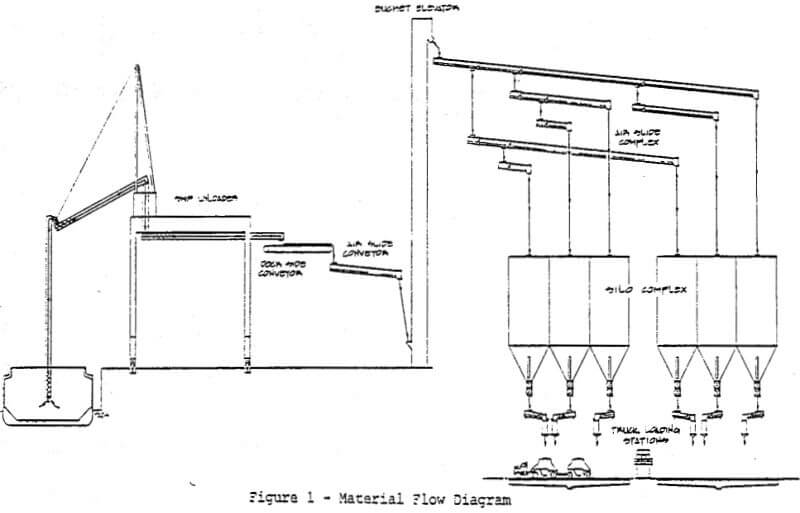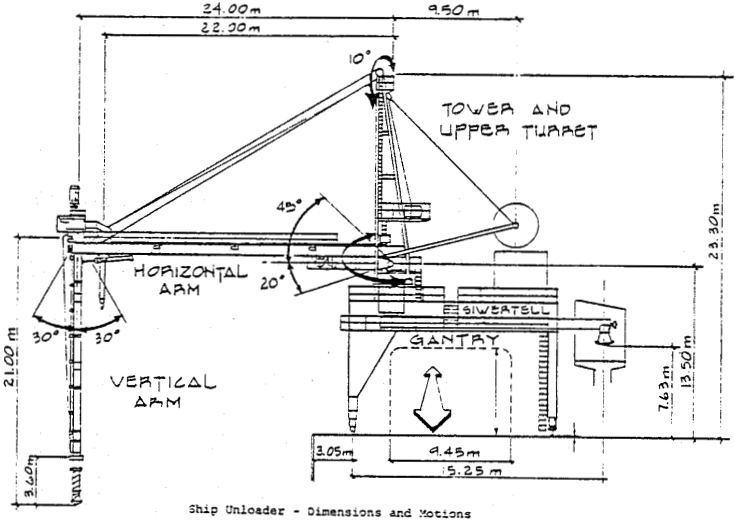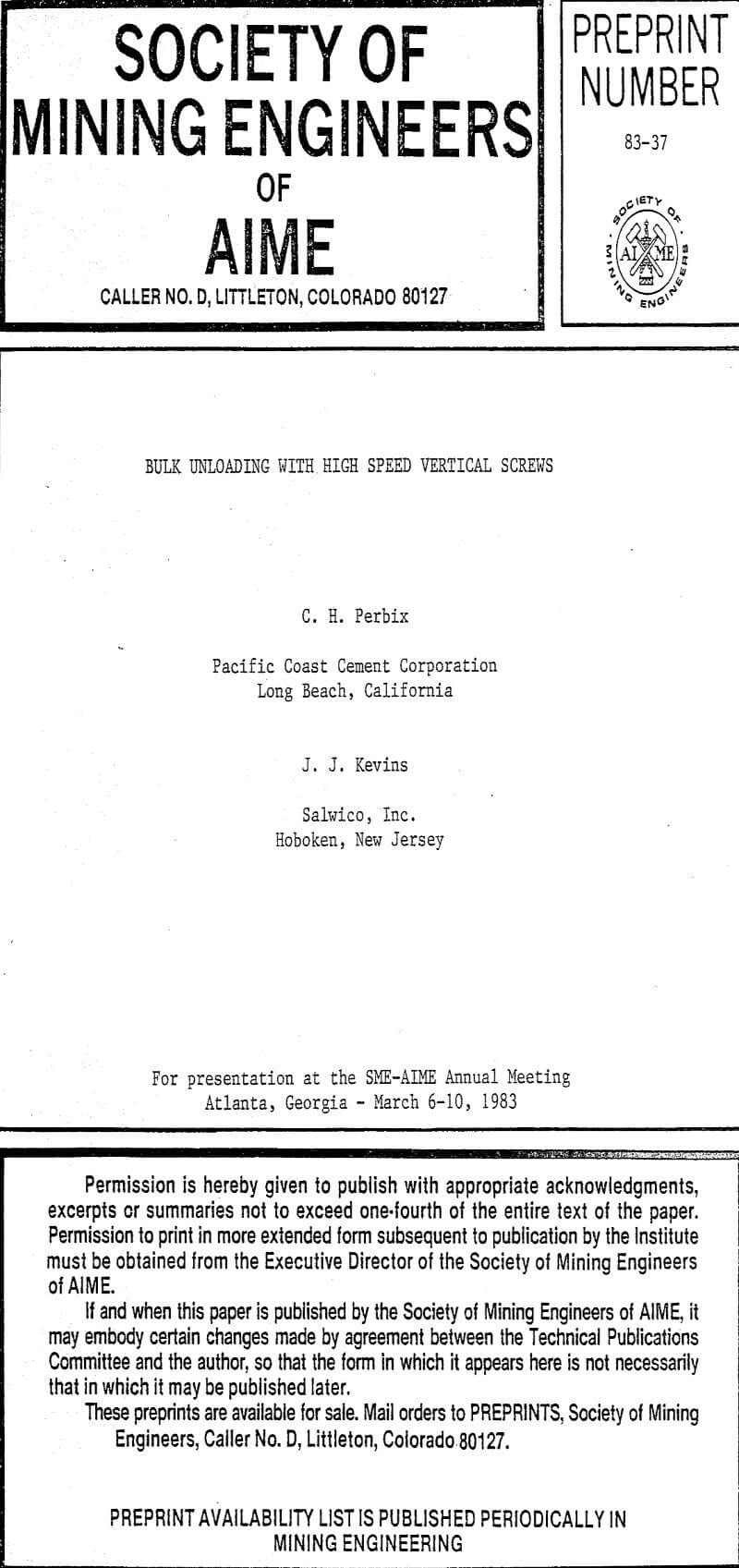The Siwertell screw unloader operates at an average rate of 600 t/h with a peak capacity of over 800 t/h. The unloader consists of three screw conveyors that dig the bulk cement from the hold and deliver it to the dockside belt conveyor. The unloader will be discussed in much greater detail later in this paper.
Three dust collection units with a total capacity of 375 m³/minute are located on top of the silos. The substations, motor control centers are located within the complex. Interlocks, safety switches, motion detectors, and drives can be monitored from the control room located within the innerstice. Normally, the control room is not continuously monitored. Functions are interlocked to shutdown upstream equipment. Normal operations can be started and stopped from the unloader control box on board ship. All electrical or mechanical faults are signaled to the unloader operator, who calls for maintenance assistance.
The ship unloader at Long Beach is the second machine of this design and manufacture located in the United States. A third machine has since been placed in operation. Throughout the world there are 56 of these machines in operation and 20 of these are being used for bulk cement. Other uses include bulk unloading of grain, coal, fertilizer, alumina, soda ash, ore pellets, chemicals and saw dust to name a few.
The vertical arm consists of the inlet device and the vertical screw conveyor. Cement is transferred from the vertical screw conveyor to the horizontal screw conveyor mounted on the horizontal arm. This is series of single flight screws of 0.7 m diameter coupled together to total 24 m in length. The conveyor delivers its load to the upper turret.
The gantry is the main frame of the unloader. Its base consists of end carriages complete with six drive motors which are used to move the entire machine back and forth on the 107 m long rail bed. The end carriages are mounted to legs, which in turn, hold up the main beam, lower turret, and portal conveyor.
The normal method of operating the ship unloader is as follows:
The operator receives a signal from the silo complex and dockside conveyor indicating that all down stream equipment is running properly. He first checks that no obstructions exist along the travelling tracks and then moves the ship unloader to the desired hold in the ship. The five motion functions travelling, slewing, hoisting, tilting, and penduluming are controlled by a portable control box with dials and two handles. The handles can be moved out and inwards, left and right, and each handle can be moved diagonally to run two motions simultaneously.
The conveyors, hydraulic unit, and the inlet device are started by using start-stop buttons on the control box. The conveyors are interlocked so he must start the gantry conveyor first, the horizontal arm conveyor second, the vertical arm conveyor third, and finally the inlet device. The machine will not start in any other sequence. The gantry conveyor automatically starts the dust collector unit. All motions and conveyors can be stopped by using the emergency stop button on the control box.



